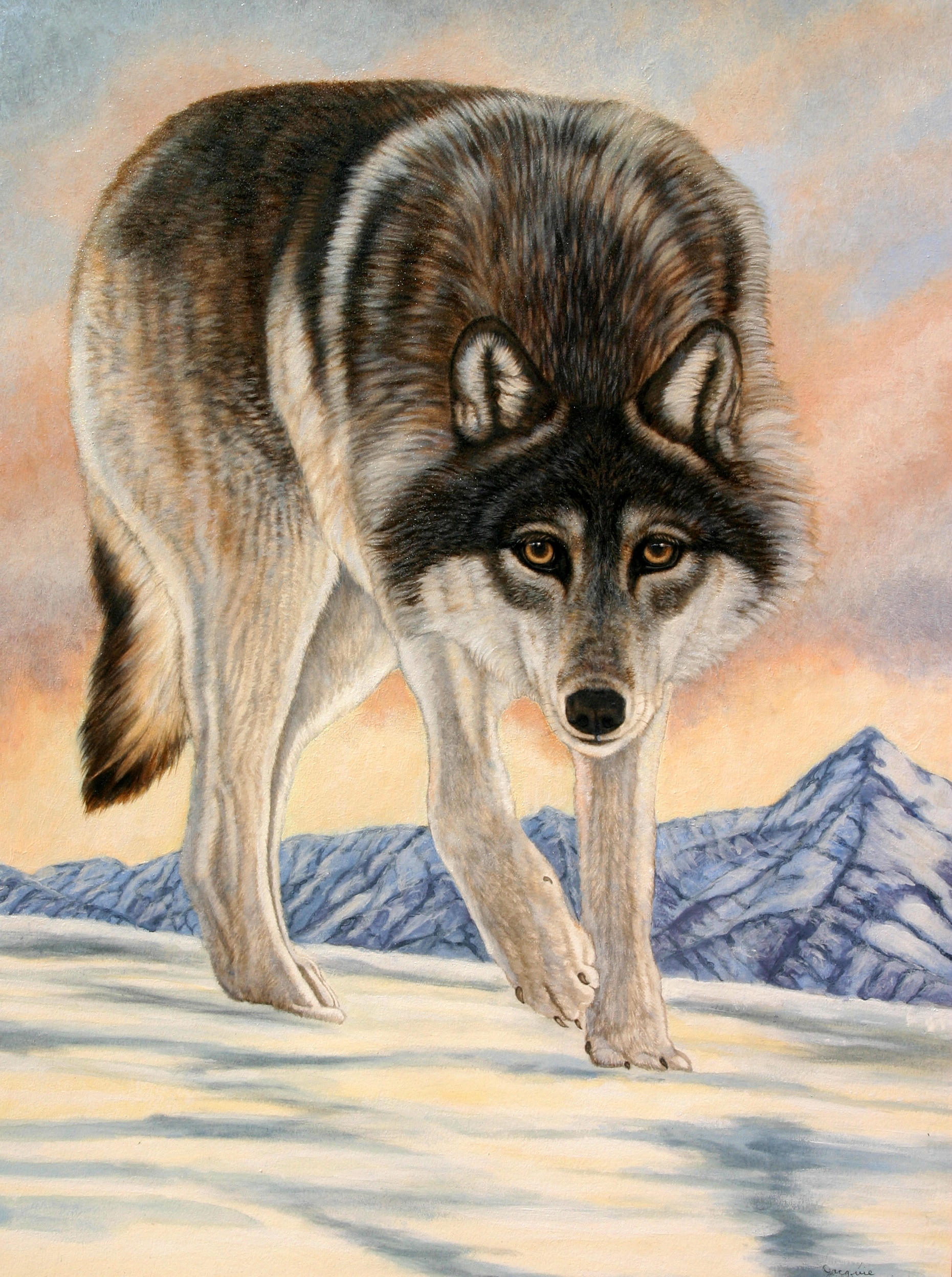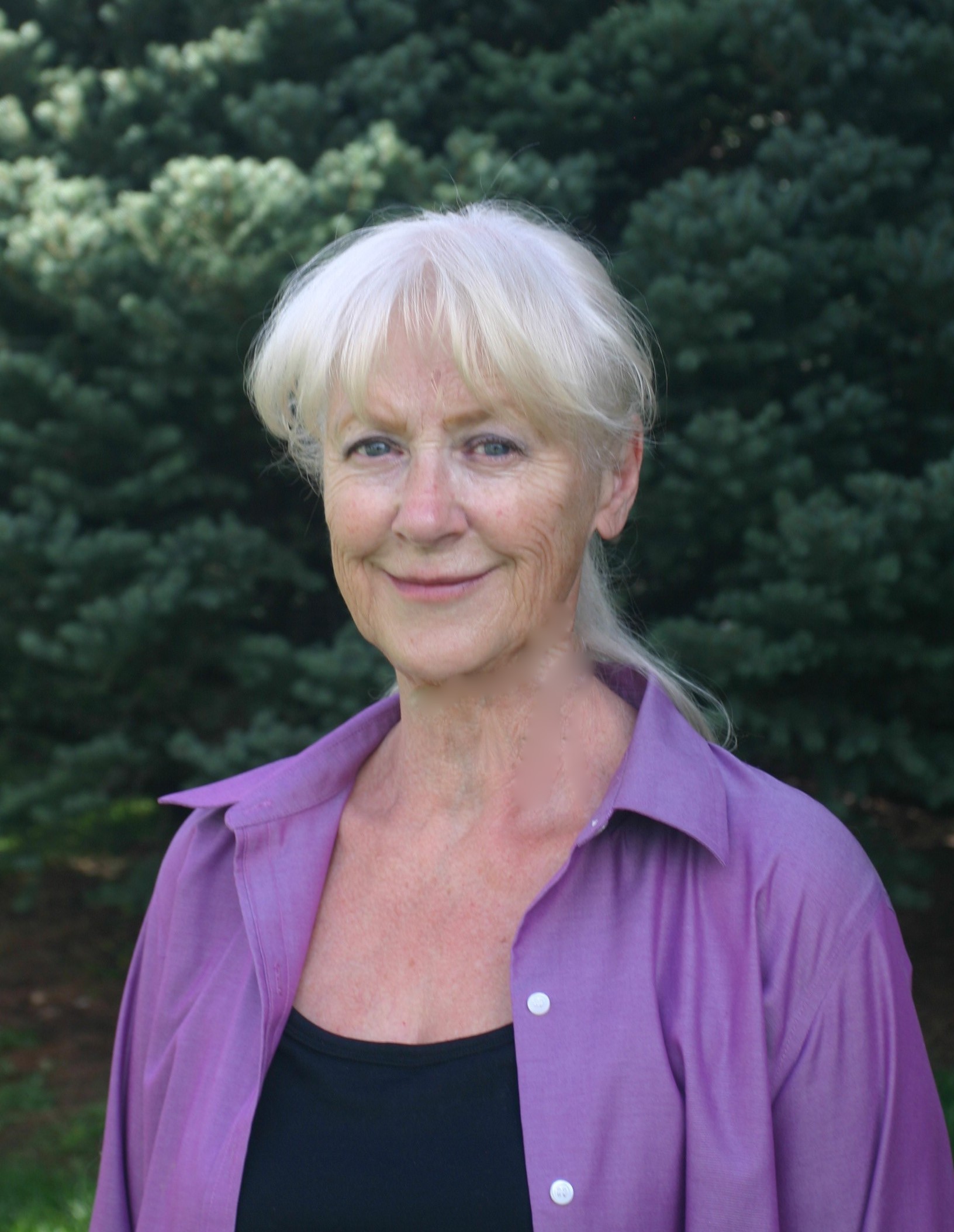Watercolors or Oil Paints?


Here is a painting I recently completed titled “Arctic Wolf on the Glacier”. It is an oil painting, a medium I haven’t worked in for over 25 years. Although I enjoy doing large compositions of whole body animals, using oil paints presents some special challenges, especially in a painting measuring
22″x30″.
There are many differences between using oil paints and watercolor paints. The first difference is that oil paint remains wet, while the artist is working on the painting. So, you must be aware to not put your arm or hand on the wet paint, while moving across the image. Most oil painters use a mall, a long handled rod with a padded bulb at the end, which rests on the easel, holding the other end in the opposite hand, while resting the painting hand on the supported rod. This allows the artist to have a steady hand while painting, without touching the wet canvas. This does work well in theory, but in actuality, as a water colorist for the past 40 years, I am used to touching the painting, while I am working on it. No matter how often I remind myself, I constantly find myself putting my arm on the painting, ending up covered in oil paint.
Another difference is that the oil paint is toxic, as are the solvents required to use the paint, and clean up. Just having an open container of turpentine in the studio will poison the air, and cause many health problems. It is essential to have an air cleaner with a charcoal filter to clean the air. You need to develop safe painting techniques, not putting the brush in your mouth, not eating while painting, not putting your fingers in your mouth, and not, for goodness sake, smoking while painting!
Many commonly used pigments contain toxic doses of heavy metals, for example: Cadmium yellow, Cadmium orange, Cadmium red, Cobalt blue, cobalt violet, and leaded white pigment. Most classically trained oil painters, insist on using leaded white paint for priming the canvas, a very dangerous process. However, most of these important safety measures are fairly easy to perform.
Another way that oil paint differs from watercolor paint, is that the bushes are completely different. Watercolor requires small soft round brushes, usually made of sable or a combination of sable and synthetic bristle. Oil works best with flat hogs-bristle brushes, and some round brushes. Since oil paint is thick, and water color is thin, it requires a different method of applying the paint. Oil painters like the ability to endlessly move the paint around, until they get it the way they like. Watercolor is a one brush stroke at-a-time application style. Watercolor paint dries almost immediately, so you must get it right the first time. There is no going back to change it. Nor can you manipulate the paint endlessly. This is what I really like that about watercolor. On the other hand, I don’t like the way oil paint is so squishy, and movable.
In my opinion, oil paint is less satisfying than watercolor. Oil paint also smells bad, takes too long to dry, and its toxic. Plus, I am able to achieve the same effects with watercolor, as I am with oil paint.
So for all of the above reasons, I am sticking with watercolor as my most preferred medium. I will also use Acrylics on canvas, again with the same visual results as with oil paints. In my opinion, it is not necessary to risk your health using toxic materials, when there are alternatives that achieve the same , or even better results.
To see my paintings Click Here


